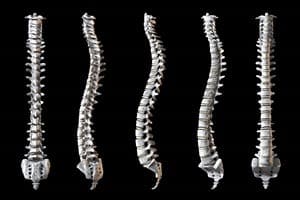statFor some women, it's about making an elegantement at special events or being a couple…

How Do Chiropractors Know If Your Spine is Out of Alignment?
 Having a misaligned spine (also called a spinal subluxation) can negatively affect your daily life in a number of ways. It can not only cause pain in the back and neck, but can also cause pain in the rest of the body because of the pressure that the misaligned vertebrae place on nerves in the spinal column. For example, many people suffer from sciatica (a condition in which pain can be felt shooting down the leg as far as the foot) due to a misaligned vertebral disc putting pressure on the spinal nerve roots. A chiropractor can diagnose if your pain is due to your spine being misaligned and can perform a spinal adjustment to restore proper alignment and range of movement, relieving pain.
Having a misaligned spine (also called a spinal subluxation) can negatively affect your daily life in a number of ways. It can not only cause pain in the back and neck, but can also cause pain in the rest of the body because of the pressure that the misaligned vertebrae place on nerves in the spinal column. For example, many people suffer from sciatica (a condition in which pain can be felt shooting down the leg as far as the foot) due to a misaligned vertebral disc putting pressure on the spinal nerve roots. A chiropractor can diagnose if your pain is due to your spine being misaligned and can perform a spinal adjustment to restore proper alignment and range of movement, relieving pain.
Spinal subluxations are very common. They occur when one or more of your 24 bony vertebrae (most people actually have 33 vertebrae counting the nine that are fused to form the sacrum and coccyx) are pulled out of alignment with one another. This can happen for a variety of reasons. Among the most frequent contributors to spinal misalignment are an injury, a sudden jar, fall or trauma, bad posture, stress, inactivity, obesity, repetitive motions and lifting something improperly. When your spine becomes misaligned, your range of motion can become more restricted, with or without accompanying pain. Although spinal misalignments can happen quickly (usually in the case of an accident or acute injury), they can also occur over time due to weak postural muscles. This is often the case with those who sit at a desk for hours each day.
A chiropractor may use a variety of different diagnostic techniques to determine if your spine is out of alignment. Most chiropractors can easily spot a subluxation, as body posture reflects any misalignment. For example, when lying down, one leg will appear shorter than the other. When standing up, the body may lean to one side, or the head may tilt to the left or right. Also, one shoulder or hip may appear higher than the other, and the distribution of body weight may favor one foot or the other.
Other things that your chiropractor may do to determine if your spine is out of alignment are to check your range of motion (reduced range of motion usually indicates a misalignment), press along your spine (called palpation) to evaluate joint function, perform strength testing and look for changes in muscle tone. He or she may also order x-rays of the spine to be taken, so as to have a visual confirmation of your spinal subluxation.
Once the misalignment has been pinpointed, your chiropractor will perform a spinal adjustment that will move your vertebrae back into alignment, restoring correct posture and alleviating pain that may have been caused by the misalignment.




